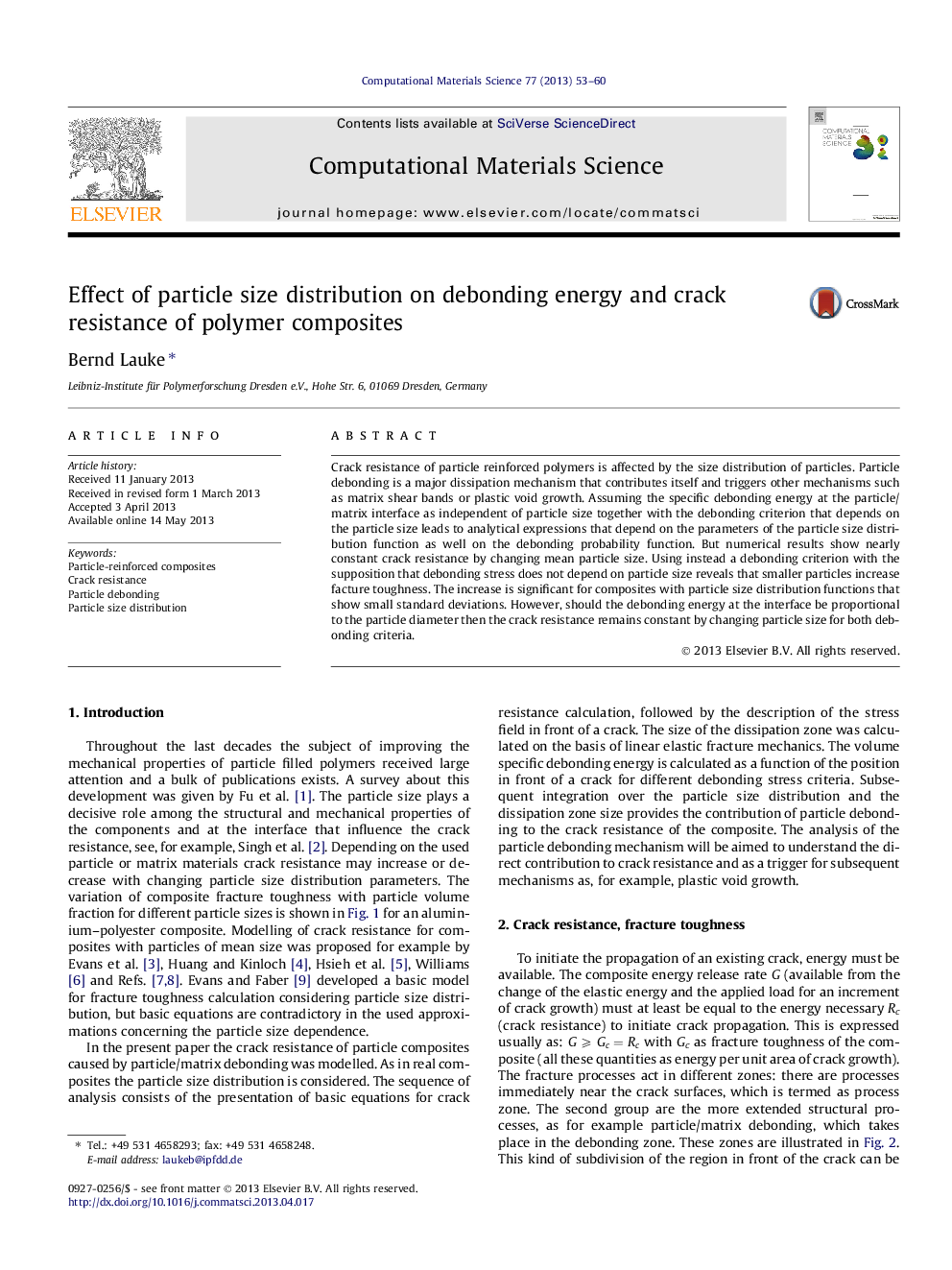| Article ID | Journal | Published Year | Pages | File Type |
|---|---|---|---|---|
| 7961700 | Computational Materials Science | 2013 | 8 Pages |
Abstract
Crack resistance of particle reinforced polymers is affected by the size distribution of particles. Particle debonding is a major dissipation mechanism that contributes itself and triggers other mechanisms such as matrix shear bands or plastic void growth. Assuming the specific debonding energy at the particle/matrix interface as independent of particle size together with the debonding criterion that depends on the particle size leads to analytical expressions that depend on the parameters of the particle size distribution function as well on the debonding probability function. But numerical results show nearly constant crack resistance by changing mean particle size. Using instead a debonding criterion with the supposition that debonding stress does not depend on particle size reveals that smaller particles increase facture toughness. The increase is significant for composites with particle size distribution functions that show small standard deviations. However, should the debonding energy at the interface be proportional to the particle diameter then the crack resistance remains constant by changing particle size for both debonding criteria.
Related Topics
Physical Sciences and Engineering
Engineering
Computational Mechanics
Authors
Bernd Lauke,
